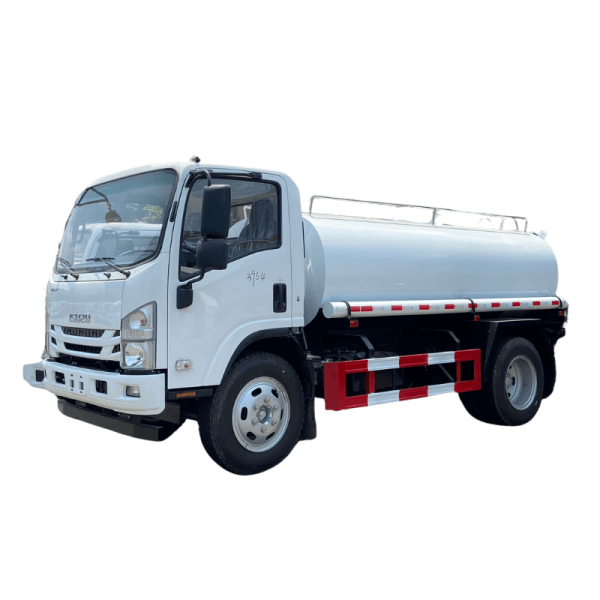Introduction
Fire truck driver training is a critical aspect of ensuring the safety and efficiency of emergency response operations. The role of a fire truck driver goes beyond simply operating a vehicle - they are responsible for navigating through traffic, responding to emergency situations, and ensuring the well-being of their crew and the public. In this comprehensive guide, we will discuss the importance of fire truck driver training, the key skills and knowledge required, and the various training methods used to prepare drivers for the challenging and high-pressure environment they will face on the job.
Importance of Fire Truck Driver Training
Fire truck driver training is essential for several reasons. First and foremost, fire trucks are large, heavy vehicles that require specialized skills to operate safely. The training ensures that drivers understand how to maneuver these vehicles in a variety of conditions, including tight spaces, busy intersections, and adverse weather.
Additionally, fire truck drivers are often required to respond to emergency situations quickly and efficiently. Training helps drivers develop the necessary skills to navigate through traffic, make split-second decisions, and arrive at the scene of an emergency in a timely manner. This can mean the difference between life and death for those in need of assistance.
Furthermore, fire truck driver training is crucial for ensuring the safety of the driver, their crew, and the public. Drivers must be well-versed in defensive driving techniques, emergency procedures, and vehicle maintenance to minimize the risk of accidents and injuries on the road.

Key Skills and Knowledge
To become a proficient fire truck driver, individuals must possess a combination of skills and knowledge that go beyond basic driving abilities. Some of the key skills and knowledge required for fire truck driver training include:
1. Defensive Driving: Fire truck drivers must be able to anticipate potential hazards on the road and react quickly to prevent accidents. Defensive driving techniques, such as maintaining a safe following distance, scanning for potential threats, and using turn signals effectively, are essential for ensuring the safety of everyone on board.
2. Emergency Response Procedures: Fire truck drivers must be familiar with the protocols and procedures for responding to various emergency situations, such as fires, medical emergencies, and hazardous material incidents. They must be able to communicate effectively with their crew members and emergency dispatchers to coordinate a swift and efficient response.
3. Vehicle Operation: In addition to basic driving skills, fire truck drivers must be proficient in operating the specialized equipment on their vehicles, such as sirens, lights, and hydraulic systems. They must also be able to navigate through narrow streets, tight corners, and other challenging driving conditions while maintaining control of the vehicle.
4. Communication Skills: Effective communication is essential for fire truck drivers to coordinate with their crew members, emergency responders, and other stakeholders during an emergency response. Drivers must be able to convey information clearly and concisely, listen actively to instructions, and remain calm under pressure.
5. Vehicle Maintenance: Fire truck drivers are responsible for ensuring that their vehicles are in proper working condition at all times. This includes conducting routine inspections, performing basic maintenance tasks, and reporting any issues to the appropriate personnel for repairs.
Training Methods
Fire truck driver training programs use a combination of classroom instruction, hands-on practice, and simulation exercises to prepare drivers for the challenges they will face on the job. Some common training methods include:
1. Refuse Compactor Truck : Fire truck driver training typically begins with classroom instruction on topics such as defensive driving techniques, emergency response procedures, vehicle operation, and communication skills. This theoretical knowledge provides drivers with a solid foundation for their practical training.
2. Driving Practice: Hands-on driving practice is a critical component of fire truck driver training. Drivers are given the opportunity to practice operating a fire truck in a controlled environment, such as a driving course or training facility, before venturing out onto public roads. This allows them to familiarize themselves with the vehicle's controls, practice maneuvering in tight spaces, and develop their driving skills under the guidance of experienced instructors.
3. Simulation Exercises: Simulation exercises are used to recreate realistic emergency scenarios that drivers may encounter on the job. These exercises allow drivers to practice their decision-making skills, communication abilities, and response times in a safe and controlled environment. Simulations can help drivers prepare for the high-pressure situations they will face on the road without putting themselves or others at risk.
4. On-the-Job Training: Once drivers have completed their initial training program, they may undergo additional on-the-job training to further refine their skills and gain practical experience in real-world situations. This hands-on training allows drivers to apply what they have learned in a supervised setting and receive feedback from experienced mentors.
Conclusion
Fire truck driver training is a critical component of ensuring the safety and efficiency of emergency response operations. By equipping drivers with the necessary skills and knowledge to operate fire trucks safely and effectively, training programs help to protect the lives of both emergency responders and the public. Through a combination of classroom instruction, hands-on practice, and simulation exercises, fire truck drivers can develop the expertise and confidence needed to navigate through traffic, respond to emergencies, and uphold the highest standards of professionalism on the road.
